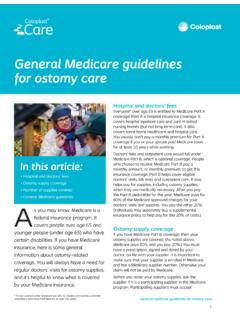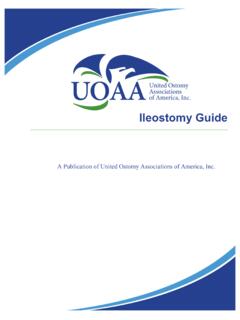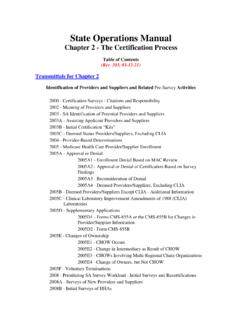Transcription of Pressure ulcers – prevention and treatment - Coloplast
1 Pressure ulcers prevention and treatmentA Coloplast quick guidePressure ulcers prevention and treatment ..3 What is a Pressure ulcer? ..4 How do Pressure ulcers occur? ..5 Who develops Pressure ulcers ? ..6 Prevalence of Pressure ulcers ..7 Risk factors ..8 The Braden scale for predicting Pressure ulcer risk ..9 The Braden scale ..10 prevention of Pressure ulcers ..11 International NPUAP-EPUAP Pressure ulcer classification system ..12 treatment of Pressure ulcers ..18 Wound infection ..20 Wound debridement ..22 Dressing selection.
2 24 Coloplast solutions for Pressure ulcers ..26 Biatain The simple choice for superior absorption ..30 Other Coloplast products for Pressure ulcers ..31 References ..34 Table of Contents2 Table of ContentsPressure ulcers prevention and treatmentAccording to recent literature, hospitalizations related to Pressure ulcers cost between $ to $ billion per year. The cost of individual patient care per Pressure ulcer may range from $20,900 to $151,700. In 2007, Medicare estimated that each Pressure ulcer added an additional $43,180 in costs to a hospital stay.
3 Understanding the challenges Pressure ulcers present to the patient and health system, education regarding their prevention and treatment is increasingly important. All providers and care-givers involved in the continuum of patient care should have access to tools which provide general knowledge on how to effectively tackle this condition. In an effort to support your health system s goals on providing education on Pressure ulcer prevention and treatment , Coloplast has published this quick-guide. This guide is intended for educational and informational purposes only.
4 It contains key recommendations for the prevention and treatment of Pressure ulcers , and will be helpful to health care professionals who are not dealing with Pressure ulcers on a day-to-day further information on this topic, please refer to the Wound, Ostomy, continence Nurses society ( ) for their Guideline for prevention and Management of Pressure ulcers and the NPUAP/EPUAP ( ) for their Pressure Ulcer prevention & treatment : Clinical Practice Guideline . Useful tools for Pressure ulcer prevention are also available at the Braden scale website ( ) Coloplast Corp.
5 , April is a Pressure ulcer? Pressure ulcers are a major cause of morbidity and mortality, especially for persons with impaired sensation, prolonged immobility, or advanced Pressure ulcer is a localized injury to the skin and/or underlying tissue usually over a bony prominence, as a result of Pressure , or Pressure in combination with NPUAP-EPUAP Pressure ulcer definition:Coccyx, Stage IIINPUAP copyright & used with permissionKnee, Stage IVNPUAP copyright & used with permission4 Without loadPressureShear forcesHow do Pressure ulcers occur?
6 A Pressure ulcer is the result of a degenerative change caused by biological tissue (skin and underlying tissue) being exposed to Pressure and shear forces. The increased Pressure prevents the blood from circulating properly, and causes cell death, tissue necrosis and the development of Pressure effect of Pressure and shear forces on tissue and blood supplyHeel, UnstageableNPUAP copyright & used with permissionCoccyx, Stage IVNPUAP copyright & used with permission5 Who develops Pressure ulcers ?Anyone is at-risk for the development of a Pressure ulcer, but some are more likely to develop one than others.
7 This is particularly true for those with impaired sensation, prolonged immobility and advanced age. Whether young or old, if somebody with frail skin remains in one position for too long without shifting their weight, they are at-risk for Pressure ulcers . Wheelchair users or people confined to a bed (for example, after surgery or an injury), are especially at-risk and those people who have a Pressure ulcer are at an even greater risk for developing another Pressure most common sites for Pressure ulcers to occur are over a bony prominence, such as the buttock (sacrum/ischium), heels, hips (trochanter), elbows, ankles (lateral and medial malleolus), back, shoulders, back of the head (occipit) and ears.
8 Common sites of Pressure ulcers6 Prevalence of Pressure ulcersNational prevalence studies have been conducted in several countries. Prevalence studies, among patients in acute care hospitals, indicated a Pressure ulcer prevalence ranging from to 17%.3 Recently, 5947 patients were surveyed in 25 hospitals in five European countries. The Pressure ulcer prevalence (Stage 1 4) was If Stage 1 Pressure ulcers were excluded, the prevalence was The sacrum and heels were the most affected sites. Only of the patients in need of prevention received fully adequate preventative Buttocks, Stage INPUAP copyright & used with permissionVertebrae, UnstageableNPUAP copyright & used with permissionHeel, Stage IIINPUAP copyright & used with permissionButtocks, Stage IINPUAP copyright & used with permission7 Risk factorsThe following factors increase the risk for Pressure ulcers4 Bed or chair-bound Advanced age (>65 years)
9 Unable to move body or parts of body without help Chronic conditions, such as diabetes or vascular disease, which affect perfusion (blood circulation) Mental disability from conditions such as dementia History of previous ulcer Urinary and/or fecal incontinence Inadequate/poor nutrition and/or dehydration Diastolic Pressure <60 and/or hemodynamic instabilityThe NPUAP/EPUAP Pressure ulcer prevention and treatment guidelines recommend to use a structured approach for risk assessment to identify individuals at-risk of developing Pressure ulcers .
10 One of the most widely used risk assessment tools is the Braden Scale for Predicting Pressure Sore Risk , developed by Barbara Braden, PhD, RN and Nancy Bergstrom, PhD, RN, FAAN ( ).NPUAP copyright & used with permission8 The Braden scale for predicting Pressure ulcer riskThe Braden scale is a clinically validated tool that allows nurses and other healthcare providers to reliably score a person s level of risk for developing Pressure ulcers by assessing six subscales:5 Sensory Perception ability to respond meaningfully to Pressure -related discomfort (1 4) Moisture degree to which skin is exposed to moisture (1 4) Activity degree of physical activity (1 4) Mobility ability to change and control body position (1 4) Nutrition usual food intake pattern (1 4) Friction and Shear amount of assistance needed to move, degree of sliding in bed and/or chair (1 3)Each of these subscales contains a numerical range, with one being the lowest score possible.


